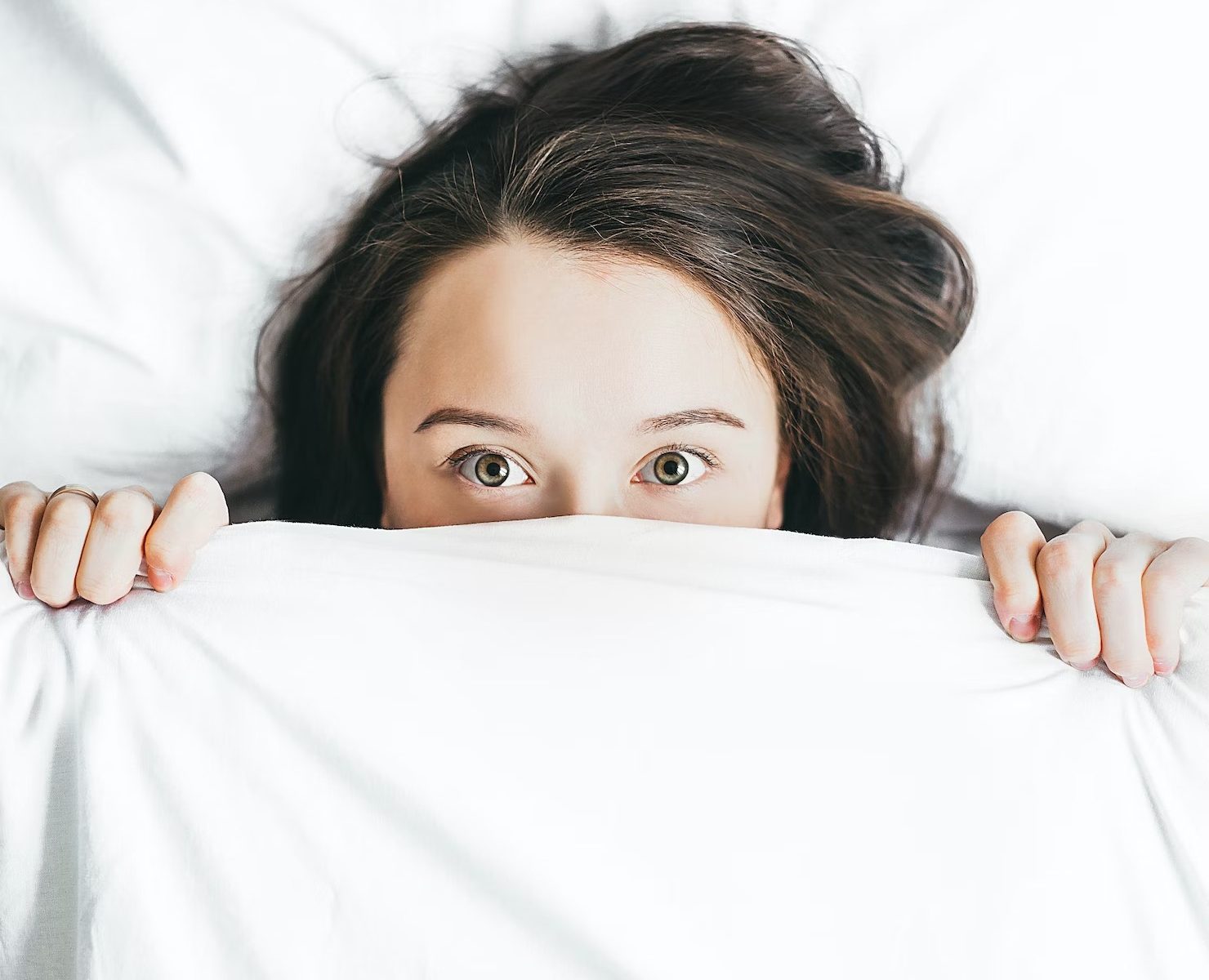Sleep is a fundamental and necessary aspect of human life. It plays a critical role in physical and mental health, yet its mechanisms and peculiarities continue to intrigue scientists and the general public alike. One such enigma is the phenomenon of sleeping with one’s eyes open. While most people close their eyes when they sleep, some individuals exhibit a behavior known as nocturnal lagophthalmos, which leads them to sleep with their eyes partially or fully open. In this comprehensive exploration, we delve into the reasons behind this intriguing phenomenon, the underlying causes, and the impact it can have on sleep quality.
Want to sleep better or hack your sleep cycle entirely? Maybe hack some other lifeskills? Try my lifestyle wellbeing sleep course. You don’t need to pay everything. Email info@keytostudy.com and ask for a big discount. They promise you’ll be happy.
The Phenomenon of Sleeping With Eyes Open
1. What is Nocturnal Lagophthalmos?
Nocturnal lagophthalmos is a condition in which individuals sleep with their eyes partially or completely open. While it may appear unsettling to observers, those affected are often unaware of their nocturnal eye behaviour. This condition varies in severity, with some individuals experiencing only partial eyelid separation while others sleep with their eyes wide open throughout the night.
2. The Prevalence of Nocturnal Lagophthalmos
Although precise statistics on the prevalence of nocturnal lagophthalmos are limited, it is generally considered a relatively rare occurrence. It can affect individuals of all ages and genders, but it is more commonly observed in older adults.
The Causes Behind Nocturnal Lagophthalmos
1. Weakness or Dysfunction of Orbicularis Oculi Muscle
The orbicularis oculi muscle is responsible for closing the eyelids. Any weakness or dysfunction in this muscle can lead to the inability to keep the eyes closed during sleep. Conditions such as Bell’s palsy, facial nerve damage, or certain neurological disorders can contribute to this muscle’s malfunction.
2. Underlying Medical Conditions
Nocturnal lagophthalmos can be associated with various medical conditions, such as thyroid eye disease, Grave’s disease, or proptosis. These conditions can affect the position of the eyelids and lead to incomplete eyelid closure during sleep.
3. Medications and Substances
Some medications and substances can interfere with normal eyelid function, leading to the partial or complete opening of the eyes during sleep. This can include muscle relaxants, alcohol, and certain sedative medications.
4. Genetics and Hereditary Factors
There is evidence to suggest that genetics may play a role in determining an individual’s susceptibility to nocturnal lagophthalmos. If one or both parents have this condition, there is a higher likelihood of their offspring experiencing it as well.
Impact on Sleep Quality
1. Eye Dryness and Irritation
One of the most immediate effects of sleeping with one’s eyes open is the increased risk of eye dryness and irritation. When the eyes are exposed to the air, tears can evaporate more rapidly, leading to discomfort and potential damage to the cornea. This can result in symptoms such as redness, itching, and blurred vision.
2. Disrupted Sleep Patterns
Nocturnal lagophthalmos can disrupt an individual’s sleep patterns, leading to fragmented and shallow sleep. The constant exposure of the eyes to light and external stimuli can make it challenging to achieve deep, restorative sleep stages, such as REM (rapid eye movement) and NREM (non-rapid eye movement) sleep.
3. Increased Susceptibility to Eye Infections
The open eyes during sleep can expose the cornea to potential sources of infection, such as dust, allergens, or pathogens. This increases the risk of eye infections, including conjunctivitis and keratitis, which can be painful and require medical intervention.
4. Psychological Impact
Continuous partial or full eye opening during sleep can be psychologically distressing for those who experience it. Feelings of self-consciousness and insecurity may arise, impacting self-esteem and overall well-being.
5. Treatment Options
Fortunately, there are various treatment options available to manage nocturnal lagophthalmos. These may include the use of lubricating eye drops, special eye masks or goggles, and, in severe cases, surgical interventions to correct underlying eyelid issues.
Diagnosis and Treatment of Nocturnal Lagophthalmos
1. Diagnosis
Diagnosing nocturnal lagophthalmos typically involves a comprehensive eye examination by an ophthalmologist or optometrist. The healthcare provider will assess the extent of eye exposure during sleep and look for potential underlying causes, such as muscle weakness or medical conditions. In some cases, specialised tests like the Schirmer test may be performed to measure tear production and assess eye dryness.
2. Treatment Options
Treatment for nocturnal lagophthalmos aims to address the underlying causes and alleviate its effects on sleep quality and eye health. Treatment options may include:
- Lubricating Eye Drops: Lubricating eye drops or ointments can help prevent eye dryness and irritation. These can be applied before bedtime to keep the eyes moist throughout the night.
- Eye Masks and Goggles: Specialised eye masks or goggles, designed to keep the eyelids closed during sleep, can be effective in managing the condition. These devices provide a physical barrier that helps maintain eyelid closure.
- Eyelid Taping: In some cases, healthcare providers may recommend eyelid taping, where a medical tape is applied to gently hold the eyelids closed during sleep. This technique can be particularly useful for temporary or mild cases of nocturnal lagophthalmos.
- Surgical Interventions: For individuals with severe or persistent nocturnal lagophthalmos caused by structural issues in the eyelids, surgical procedures may be considered. These surgeries aim to correct eyelid abnormalities and improve their function, allowing for better eye closure during sleep.
- Management of Underlying Conditions: When nocturnal lagophthalmos is secondary to an underlying medical condition, such as thyroid eye disease, addressing the primary condition is essential. Treatment of the underlying condition may lead to improvements in eyelid function and overall eye health.
Coping Strategies for Individuals with Nocturnal Lagophthalmos
- Environmental Modifications: Individuals with nocturnal lagophthalmos can make modifications to their sleep environment to minimise external stimuli. This includes using blackout curtains to block out light and reducing noise to create a conducive sleep atmosphere.
- Regular Eye Care: Maintaining regular eye examinations with an eye care professional is crucial for monitoring eye health and catching any complications, such as infections, early on.
- Avoiding Eye Irritants: To reduce the risk of eye irritation and infection, it’s advisable to avoid exposure to allergens, dust, and smoke, especially in the bedroom.
- Stress Management: Stress and anxiety can exacerbate nocturnal lagophthalmos. Engaging in stress-reduction techniques such as mindfulness, meditation, or yoga may help improve sleep quality.
- Support Networks: Joining support groups or seeking counseling can be valuable for individuals who experience emotional distress due to their condition. Sharing experiences and coping strategies with others facing similar challenges can be empowering.
Conclusion
Nocturnal lagophthalmos, the phenomenon of sleeping with one’s eyes open, is a condition that can significantly impact an individual’s sleep quality and eye health. While it is relatively rare, its effects on daily life can be considerable. However, with proper diagnosis and treatment, individuals with nocturnal lagophthalmos can manage the condition effectively and improve their sleep quality and overall well-being. Additionally, coping strategies, environmental modifications, and emotional support can all contribute to a more comfortable and fulfilling life for those affected by this unique sleep disorder. By understanding the causes and consequences of nocturnal lagophthalmos, individuals and healthcare providers can work together to ensure that their eyes find restful slumber with their lids gently closed, as they should during sleep.

